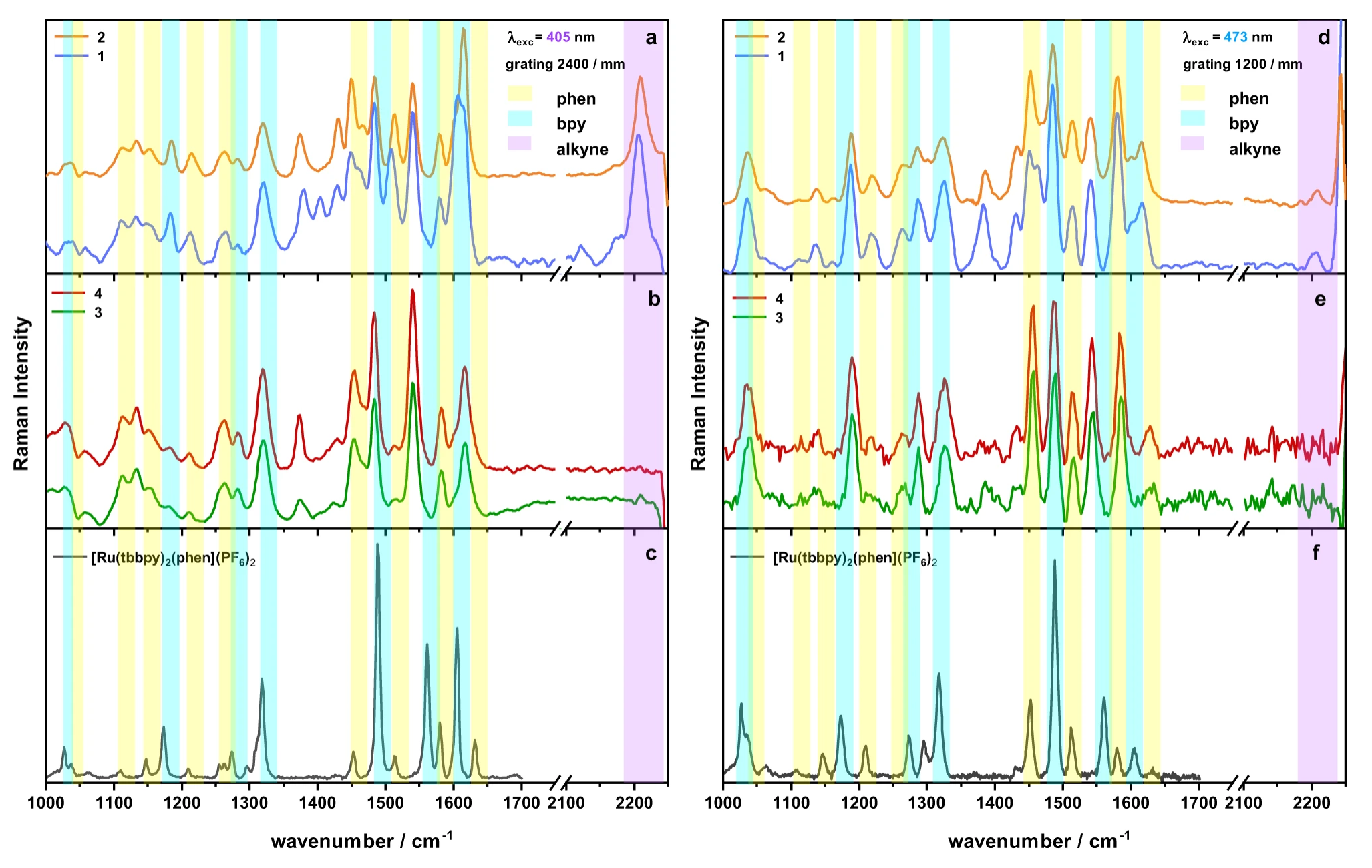- Home
- Research
- Functional Interfaces
- Research results
- Outpacing Conventional Nicotinamide Hydrogenation Catalysis by a Strongly Communicating Heterodinuclear Photocatalyst
Outpacing Conventional Nicotinamide Hydrogenation Catalysis by a Strongly Communicating Heterodinuclear Photocatalyst

11.09.2023
Photocatalysts are of fundamental importance both in large-scale chemical analyses and in metabolic processes in living organisms. Therefore, understanding how they work is of utmost importance not only to optimize photocatalytic processes but also to develop more stable, selective, and efficient photocatalytic systems. In this work, among other things, essential electron transfer processes of photocatalytical systems were understood by special spectroscopic investigations of three structurally similar photocatalysts that differ only in their bridging ligand. Contrary to the prevailing opinion in research so far, it could be shown that not the first electron transfer process, but the speed of the 2nd electron transfer correlates with the photocatalytic formation of NADH from NAD+. A second important finding is that the complex with the fastest photocatalysis is not the one with the fastest intramolecular electron transfer for the first electron. Various processes could be identified that limit the efficiency of the catalyst. This work thus lays the foundation for realizing more stable and efficient catalysts in the future.
In Prof. Dietzek-Ivanšic´ Research Department, the method of spectro-electrochemistry (SEC), i. e. UV-Vis-SEC, resonance Raman-SEC and transient absorption SEC, among others, was established and used to investigate the dynamics of light-induced charge transfer processes. The mastery of this elaborate, sensitive, and very informative transient absorption SEC, which is, however, experimentally challenging, is unique worldwide. Thus, this unique selling point has promoted the visibility of the institute and has contributed significantly to the successful establishment and defence of the TRR-SFB CataLight and other projects. The above work also builds a bridge to biophotonics as a core competence of the institute because the molecule NADH plays a crucial role in the energy metabolism of living systems. Thus, this work and the method are also highly relevant for basic biochemical research.
